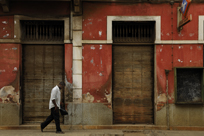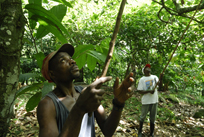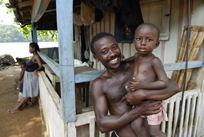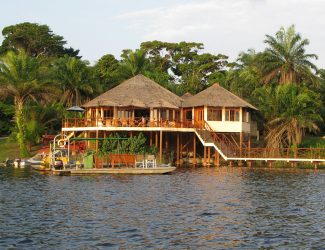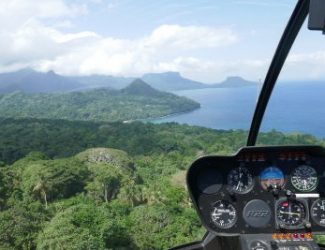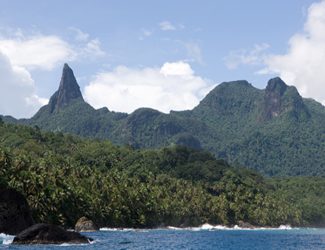São Tomé / Príncipe: People
São Tomé and Príncipe is a place with a rich cultural heritage where people are happy to meet you. The lack of tribal, ethnic or religious conflict adds to the friendly “leve leve” (as the locals say, “easy-easy”) atmosphere.
At the moment Cape Verdeans form the largest group of foreigners, amounting to about 10 percent of the total population. Many have adopted the São Tomense nationality.
Portuguese, Angolans and Mozambicans make up most of the rest of the foreign community. Like the Cape Verdeans, they are relatively well integrated with the other islanders, owing to a shared Portuguese cultural background. The Angolares, descended from slaves who survived a shipwreck in the 16th century, remained apart in the isolated southern zone of São Tomé island until the late 19th century, speaking a Bantu language. They have since spread throughout the country and have become largely assimilated.
Almost the entire population belongs to the Roman Catholic church, although there are a few small Protestant congregations. Traditional African religions are also practiced.
Portuguese is the official language and is understood by a majority of islanders.
Portuguese colonisation and slavery
The human history on São Tomé & Príncipe begins in 1470, when the Portuguese settlers came to the islands. No evidence is available that African settlers were there before that time, although this is likely. Slaves from Creole descent who were put to work in the sugar cane fields towards the end of the 15th century, were freed approximately 20 years later. Their work and living conditions, however, did not change until much later. Sugar cultivation declined over the years, and by the mid-1600s São Tomé was little more than a port of call for bunkering ships. In the early 1800s, two new cash crops, coffee and cocoa, were introduced. The rich volcanic soils proved well suited to the new cash crop industry, and soon extensive plantations (roças), owned by Portuguese companies or absentee landlords, occupied almost all of the good farmland. By 1908, São Tomé had become the world’s largest producer of cocoa, still the country’s most important crop. The roças system, which gave the plantation managers a high degree of authority, led to abuses against the African farm workers. Although Portugal officially abolished slavery in 1875, the practice of forced paid labour continued.
After a period of transitional government, São Tomé and Príncipe achieved independence on July 12, 1975.
Tours
Africa’s Eden offers several attractive tours in Gabon and Príncipe. From just a weekend in Loango or Roça Belo Monte, up to 13 days combination tour Gabon-Príncipe. Read more
Roça Belo Monte
The former coffee and cacao plantation Belo Monte on the tropical island of Príncipe has been transformed into a charming hotel offering luxurious accommodation in staggeringly beautiful natural surroundings. Roça Belo Monte is not only a wonderful place to relax and recharge your spirit, but also the perfect starting point to explore and discover the island. Read more
Activities
Want to explore the island? There are many possibilities: marine excursions like snorkelling, kayaking, scuba diving, whale watching and terrestrial excursions like hiking and biking. Read more
Forever Príncipe
Forever Príncipe conservation alliance is part of the Conservation Tourism Programme on the island of Príncipe in the Gulf of Guinea developed by Africa’s Eden. Read more

